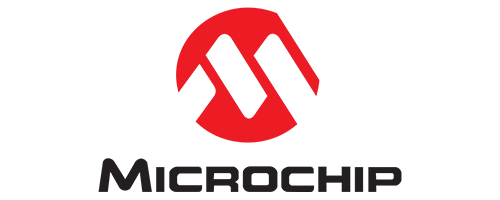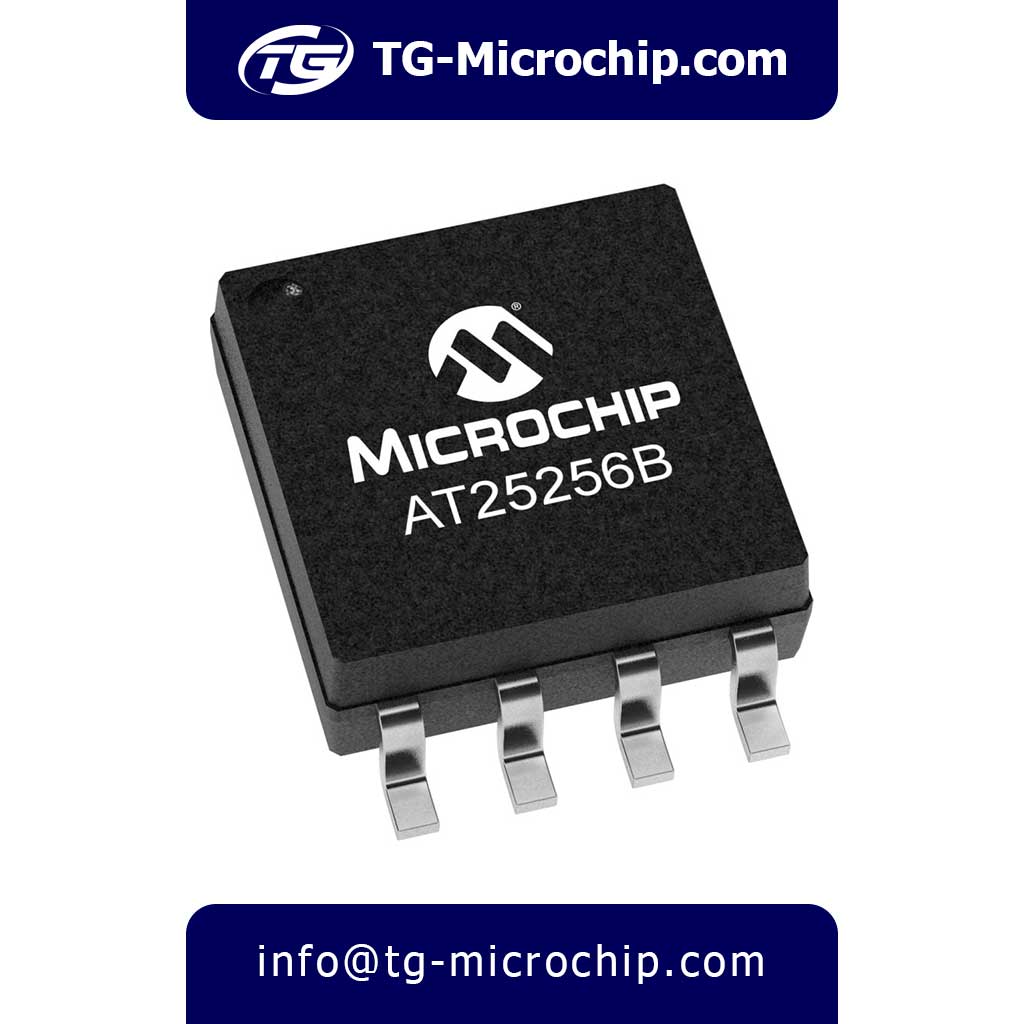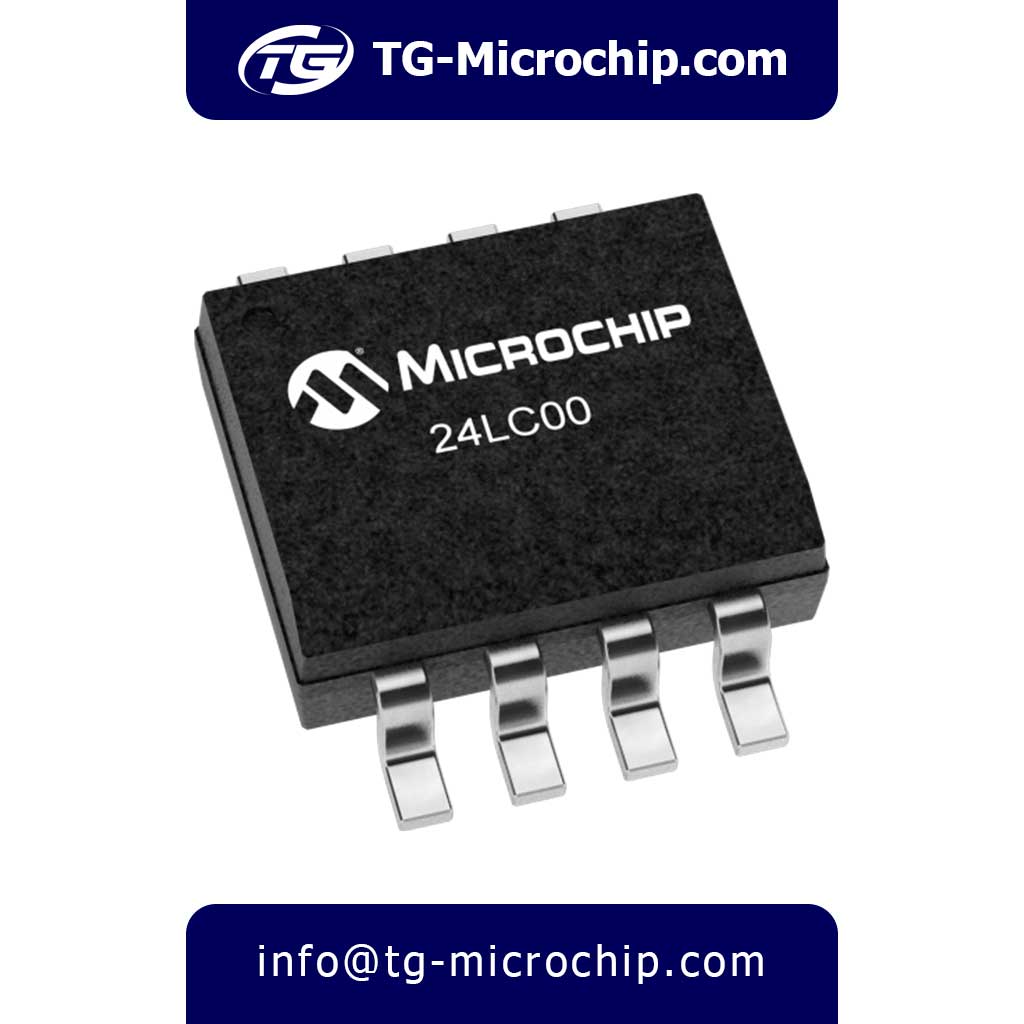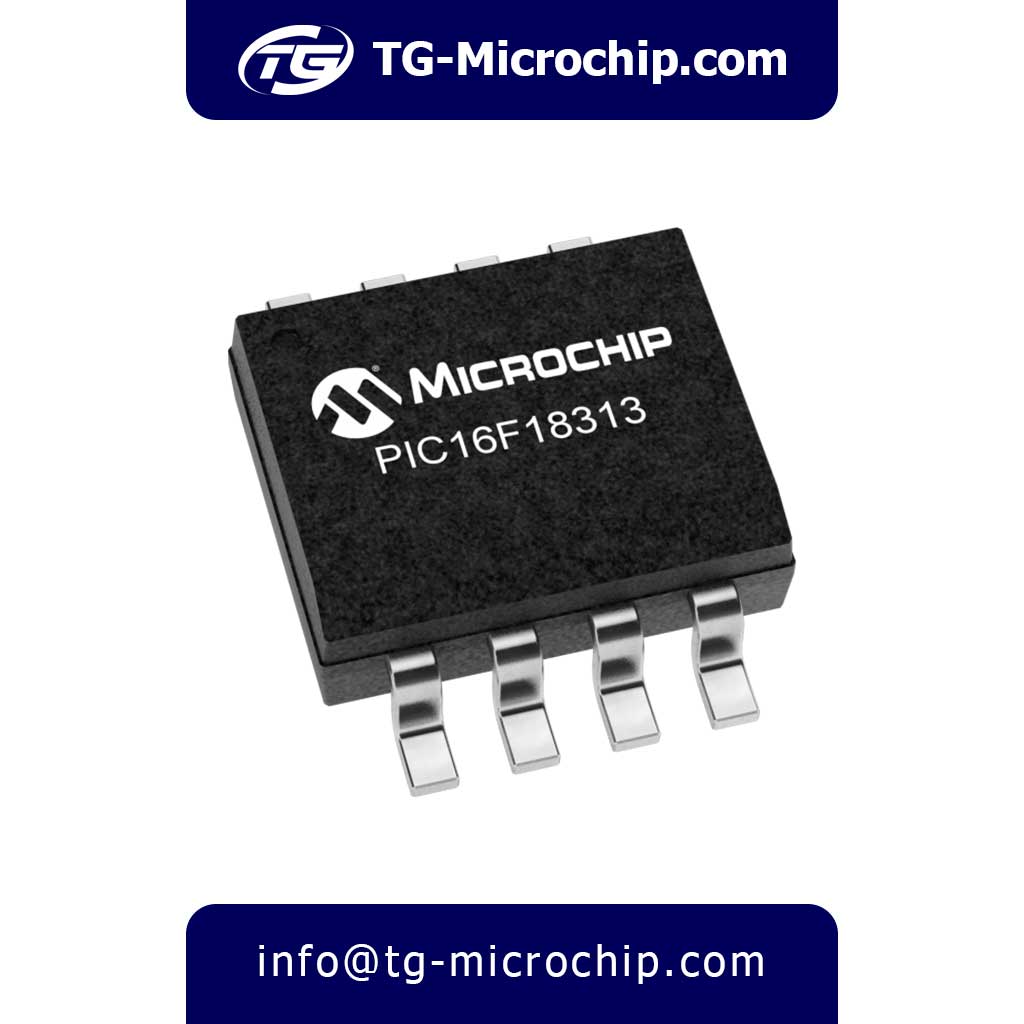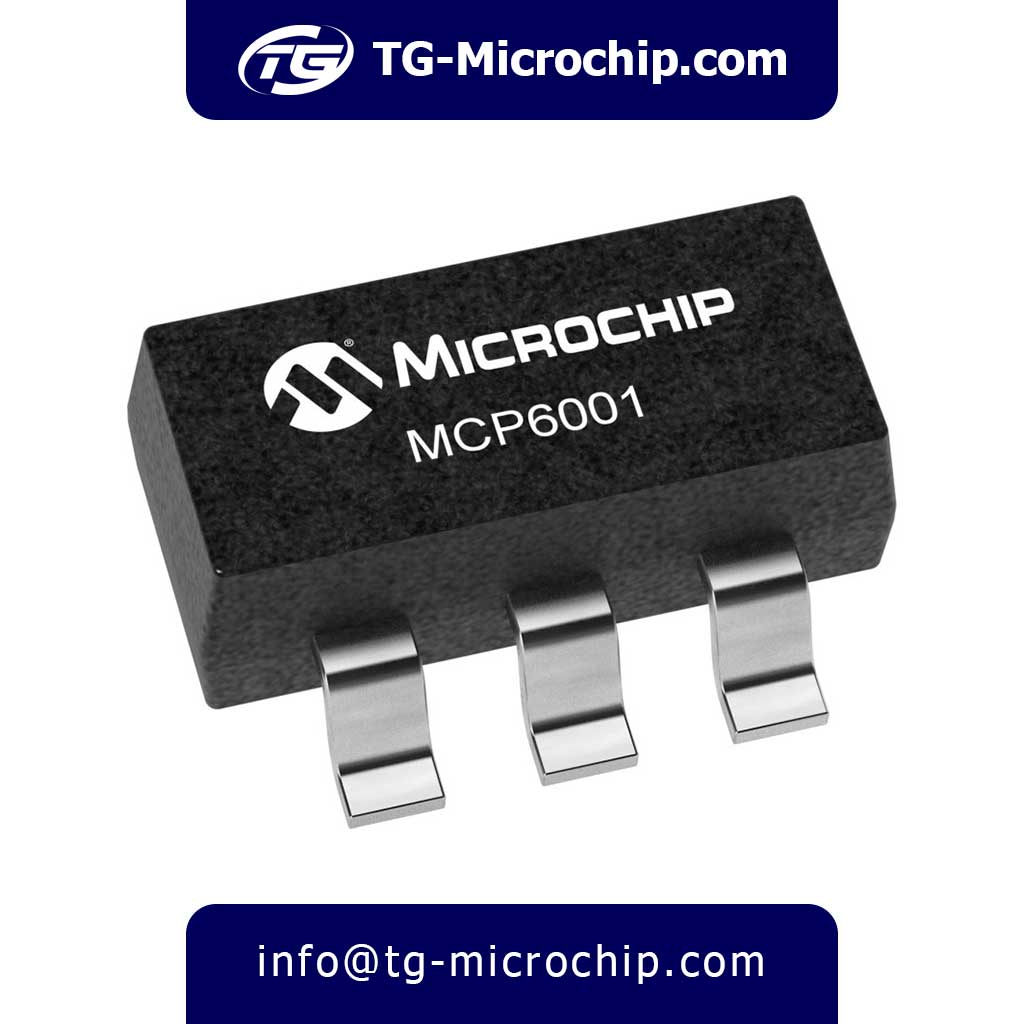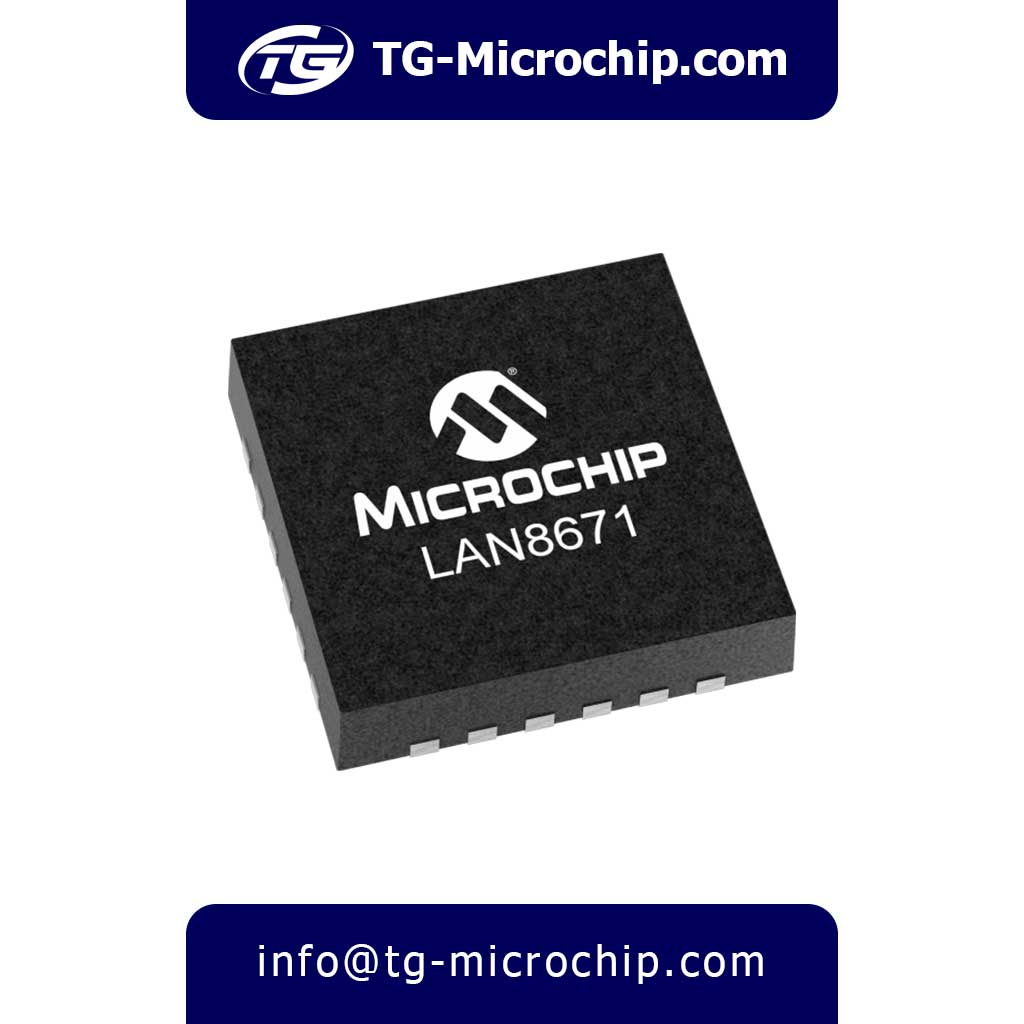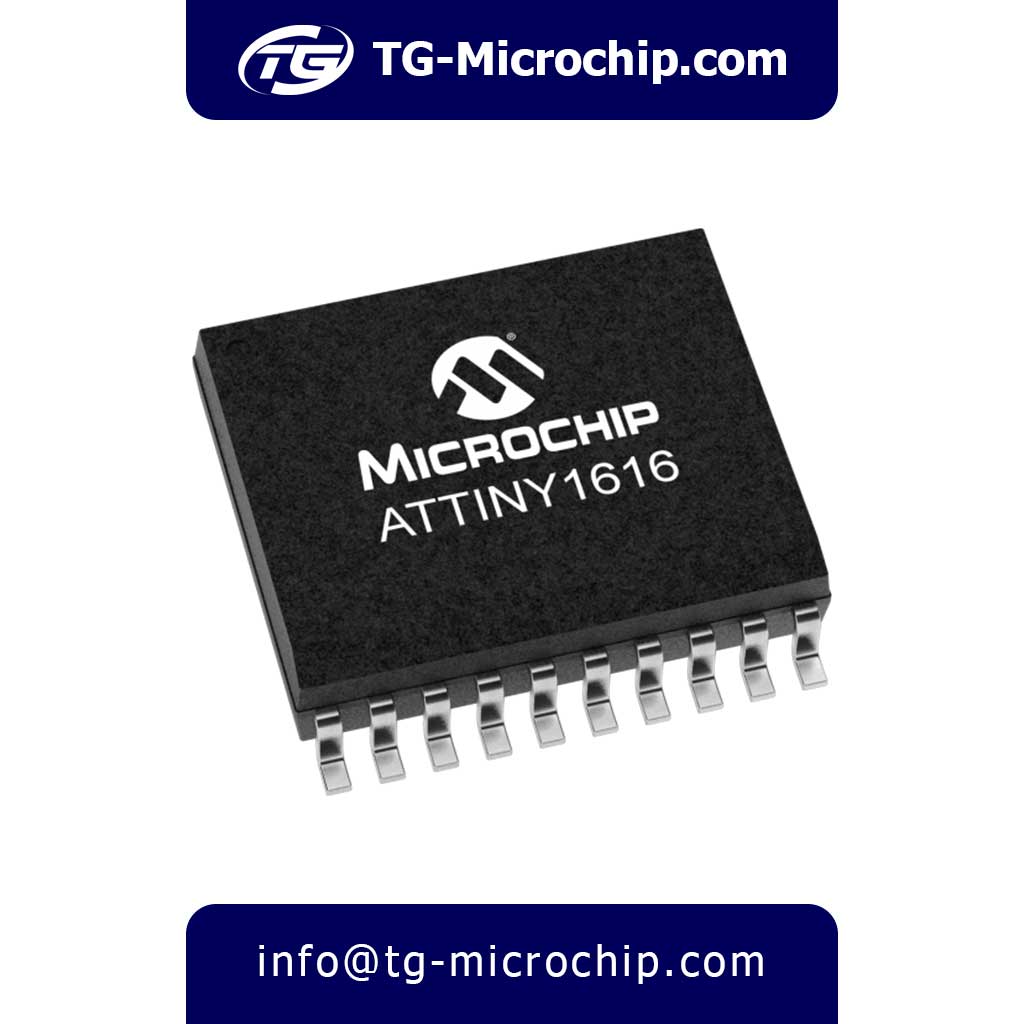For order or price inquiry of AT25010B-SSHL-T Microchip Technology / Atmel – EEPROM Memory IC, Please click on Buy Order button and fill the RFQ form we will check out inventory and offer you our best price .
Quick Access
About
The AT25010B-SSHL-T is a 1 Kbit (128 x 8) serial EEPROM designed for non-volatile data storage in embedded systems. It utilizes a 3-wire SPI (Serial Peripheral Interface) for high-speed communication, supporting clock frequencies up to 20 MHz, making it suitable for applications requiring fast read/write operations. The device operates across a wide voltage range (1.8V to 5.5V), ensuring compatibility with both low-power and standard microcontroller systems.
A key feature of this EEPROM is its low power consumption, with a standby current as low as 5 µA, making it ideal for battery-powered devices such as IoT sensors and portable electronics. Additionally, it offers high endurance (1 million write cycles) and 100-year data retention, ensuring long-term reliability in industrial, automotive, and consumer applications. The SOIC-8 Narrow package provides a compact footprint, optimizing board space in dense PCB designs.
The AT25010B-SSHL-T includes built-in ECC (Error Correction Code) protection, enhancing data integrity in noisy environments. It supports sequential and byte-level read/write operations, along with a 16-byte page write buffer for efficient data handling. Its industrial temperature range (-40°C to +85°C) ensures stable performance in harsh conditions, making it suitable for automotive and industrial control systems.
Applications for this EEPROM span firmware storage, configuration settings, and parameter logging in devices such as smart meters, medical equipment, and communication modules. Its SPI interface simplifies integration with microcontrollers, while its RoHS compliance aligns with environmental regulations.
In summary, the AT25010B-SSHL-T is a versatile, high-performance EEPROM that balances speed, power efficiency, and durability, making it a preferred choice for embedded storage solutions across multiple industries. Its combination of wide voltage operation, robust endurance, and compact packaging ensures adaptability in diverse electronic designs.
Key Features
Memory Specifications
- Memory Capacity: 1 Kbit (128 bytes) of non-volatile storage
- Memory Organization: 128 x 8-bit (byte-addressable)
- Page Size: 16-byte page write buffer for efficient programming
Interface & Communication
- Interface Type: 3-wire SPI (Serial Peripheral Interface) with modes 0,0 & 1,1 compatibility
- Maximum Clock Frequency: 20 MHz for high-speed data transfer
- Access Time: 80 ns for fast read operations
- Sequential & Byte-Level Access: Supports both sequential and individual byte read/write operations
Electrical Characteristics
- Supply Voltage Range: 1.8V to 5.5V
- Active Read Current: 10 mA (max) during operation
- Standby Current: 5 µA (typical) for power-saving mode
- Write Cycle Time: 5 ms per byte or page
Data Integrity & Protection
- Built-in ECC (Error Correction Code)
- Hardware Write Protection: Optional write protection via dedicated pin
Endurance & Data Retention
- Write/Erase Endurance: 1,000,000 cycles per byte
- Data Retention: 100 years at specified operating conditions
Physical & Environmental Specifications
- Package Type: SOIC-8 Narrow (208-mil, 4.98 x 3.99 x 1.48 mm)
- Operating Temperature: -40°C to +85°C (industrial-grade)
- Moisture Sensitivity Level (MSL): MSL 3 (168-hour floor life at <30°C/85% RH)
Compliance & Manufacturing
- RoHS Compliance: Yes (lead-free and environmentally friendly)
- Factory Packaging: Reel, 4,000 units per reel
- Unit Weight: 0.019048 oz (approx. 0.54 g)
Additional Functional Features
- Chip Enable (CE) Pin: For device selection in multi-slave SPI systems
- Self-Timed Write Cycle: Automatically manages erase and write sequences
Summary of Technical Attributes
- SPI Communication: High-speed 20 MHz clock support
- Wide Voltage Operation: 1.8V-5.5V range
- Industrial Robustness: -40°C to +85°C operating range
- Compact Footprint: SOIC-8 package for space-constrained designs
Applications
1. Industrial Automation & Control Systems
- Application: Stores configuration parameters, calibration data, and device settings in PLCs (Programmable Logic Controllers), motor drives, and sensors.
- Why Used: Its 1 million write cycles and 100-year data retention ensure reliable operation in harsh industrial environments with frequent parameter updates.
- Example: Saves encoder positions or PID tuning values in robotic arms.
2. Automotive Electronics
- Application: Used in ECUs (Engine Control Units), infotainment systems, and tire pressure monitoring sensors (TPMS).
- Why Used: Withstands -40°C to +85°C temperatures and provides SPI interface compatibility for communication with automotive microcontrollers.
- Example: Stores VIN (Vehicle Identification Number) or firmware updates.
3. Medical Devices
- Application: Retains critical data in portable medical equipment (e.g., glucose monitors, infusion pumps).
- Why Used: Low power consumption (5 µA standby) extends battery life, while ECC protection prevents data corruption.
- Example: Logs patient dosage history in wearable drug delivery systems.
4. Consumer Electronics
- Application: Embedded in smart home devices (thermostats, security cameras), wearables, and gaming peripherals.
- Why Used: 1.8V–5.5V voltage range allows integration with both low-power and legacy systems.
- Example: Saves user preferences in wireless keyboards or IoT door locks.
5. Aerospace & Defense
- Application: Stores firmware and mission-critical data in avionics, drones, and communication systems.
- Why Used: Radiation-hardened variants (not this specific model) are derived from the same family, but this EEPROM’s 100-year retention suits non-critical aerospace logging.
6. Communications Equipment
- Application: Holds MAC addresses, SSIDs, and network configurations in routers, modems, and 5G base stations.
- Why Used: 20 MHz SPI speed enables rapid data access during network initialization.
7. Test & Measurement Instruments
- Application: Calibration data storage in oscilloscopes, multimeters, and environmental sensors.
- Why Used: Self-timed write cycles (5 ms) simplify firmware design for real-time data logging.
8. IoT & Edge Devices
- Application: Stores sensor data (temperature, humidity) in smart agriculture or asset-tracking devices.
- Why Used: SOIC-8’s compact size fits space-constrained PCB designs.
9. Legacy System Upgrades
- Application: Replaces older parallel EEPROMs in retrofitted industrial machines.
- Why Used: SPI interface reduces wiring complexity compared to parallel alternatives.
10. Energy Management Systems
- Application: Logs power consumption data in smart meters and solar inverters.
- Why Used: 1 million write cycles handle frequent data updates over decades.
Key Cross-Industry Advantages
- Reliability: Combines ECC protection and hardware write protection for fail-safe operation.
- Flexibility: Wide voltage support bridges 3.3V and 5V systems without level shifters.
- Longevity: 100-year retention meets compliance requirements for medical and automotive.
Advantages
1. Superior Power Efficiency
- Enables ultra-low power consumption in battery-operated devices due to wide 1.8V-5.5V operating range
- Dramatically extends battery life with just 5µA standby current
- Eliminates need for power regulation circuits in multi-voltage systems
2. Unmatched Reliability
- Provides absolute data security with 100-year retention guarantee
- Ensures mission-critical data integrity through 1 million write cycles
- Maintains stable operation across extreme industrial temperatures (-40°C to +85°C)
3. Optimized System Performance
- Accelerates system responsiveness with 20MHz SPI interface speed
- Reduces processor overhead through hardware-based ECC protection
- Simplifies firmware updates with 16-byte page write capability
4. Design Flexibility
- Enables seamless integration with virtually any microcontroller platform
- Saves valuable PCB space with compact SOIC-8 package
- Supports both legacy and modern systems through wide voltage compatibility
5. Enhanced Data Security
- Prevents accidental data corruption with hardware write protection
- Ensures reliable operation in electrically noisy environments
- Maintains data integrity during power fluctuations
6. Manufacturing & Supply Chain Benefits
- Guarantees long-term availability through Microchip’s product longevity program
- Simplifies inventory management with industry-standard packaging
- Reduces qualification time with RoHS/REACH compliance
7. Cost Optimization
- Lowers total system cost by eliminating external components
- Reduces development time with simple SPI interface implementation
- Minimizes warranty issues through proven reliability
8. Future-Proof Design
- Supports next-generation low-power IoT applications
- Facilitates easy migration across product generations
- Maintains compatibility with evolving industry standards
Specifications
| Category | Specification |
|---|---|
| Manufacturer | Microchip Technology |
| Product Category | EEPROM (Electrically Erasable PROM) |
| Product Type | Serial EEPROM (SPI Interface) |
| Series | AT25010B |
| Part Number | AT25010B-SSHL-T |
| Package / Case | SOIC-8 Narrow (208-Mil) |
| Mounting Style | SMD/SMT (Surface Mount) |
| Memory Type | Non-Volatile EEPROM |
| Memory Size | 1 Kbit (128 x 8 organization) |
| Interface Type | 3-Wire SPI (Serial Peripheral Interface) |
| Supply Voltage Range | 1.8V to 5.5V (Wide Voltage Support) |
| Clock Frequency (Max) | 20 MHz (SPI-Compatible) |
| Access Time | 80 ns |
| Write Cycle Time | 5 ms (Page/Byte Write) |
| Data Retention | 100 Years |
| Endurance | 1,000,000 Write/Erase Cycles |
| Operating Temperature | -40°C to +85°C (Industrial Grade) |
| Active Read Current | 10 mA (Max) |
| Standby Current | 5 µA (Typical) |
| Organization | 128 x 8 (Byte-Addressable) |
| Page Size | 16 Bytes (Page Write Buffer) |
| Moisture Sensitivity | MSL 1 (Unlimited Floor Life at <30°C/85% RH) |
| RoHS Compliance | Yes (Lead-Free & Green Compliant) |
| Dimensions (L x W x H) | 4.98 mm x 3.99 mm x 1.48 mm |
| Factory Packaging | Reel, 4,000 Units |
| Brand | Microchip Technology (Formerly Atmel) |
| Subcategory | Memory & Data Storage |
| Unit Weight | 0.019048 oz (Approx. 0.54 g) |
Comparison with Similar Components
1. Memory Type and Capacity Comparison
| Component | Memory Type | Capacity | Organization | Page Size |
|---|---|---|---|---|
| AT25010B-SSHL-T | EEPROM | 1 Kbit | 128×8 | 16B |
| AT25020B-SSHL-T | EEPROM | 2 Kbit | 256×8 | 16B |
| AT25320BSSHLT | EEPROM | 32 Kbit | 4Kx8 | 32B |
| AT25SF041B-SSHD-T | NOR Flash | 4 Mbit | 512Kx8 | 256B |
| CAT25010YI-G | EEPROM | 1 Kbit | 128×8 | 16B |
| AT24C1024BW-SH25-T | EEPROM | 1 Mbit | 128Kx8 | 128B |
| AT29C512-90JU | NOR Flash | 512 Kbit | 64Kx8 | N/A |
| AT25PE20-SSHN-T | Serial Flash | 2 Mbit | 256Kx8 | 256B |
| AT25SL321-UUE-T | Serial Flash | 32 Mbit | 4Mx8 | 256B |
| AT25DF161-SSH-B | NOR Flash | 16 Mbit | 2Mx8 | 256B |
Analysis:
- The AT25010B-SSHL-T sits at the lowest capacity tier, making it ideal for small configuration storage
- EEPROM variants maintain consistent 8-bit organization but differ in page sizes
- Flash memories offer significantly larger capacities but with different architectures
2. Interface and Performance Comparison
| Component | Interface | Max Speed | Write Time | Endurance | Retention |
|---|---|---|---|---|---|
| AT25010B-SSHL-T | 3-Wire SPI | 20 MHz | 5 ms | 1M cycles | 100 yrs |
| AT25020B-SSHL-T | 3-Wire SPI | 20 MHz | 5 ms | 1M cycles | 100 yrs |
| AT25320BSSHLT | 3-Wire SPI | 20 MHz | 5 ms | 1M cycles | 100 yrs |
| AT25SF041B-SSHD-T | SPI Quad | 108 MHz | 1.5 ms | 100K cycles | 20 yrs |
| CAT25010YI-G | SPI | 20 MHz | 5 ms | 1M cycles | 100 yrs |
| AT24C1024BW-SH25-T | I2C | 1 MHz | 5 ms | 1M cycles | 100 yrs |
| AT29C512-90JU | Parallel | 90 ns | 10 ms | 10K cycles | 10 yrs |
| AT25PE20-SSHN-T | SPI | 85 MHz | 3 ms | 100K cycles | 20 yrs |
| AT25SL321-UUE-T | SPI | 104 MHz | 2 ms | 100K cycles | 20 yrs |
| AT25DF161-SSH-B | SPI | 70 MHz | 0.7 ms | 100K cycles | 20 yrs |
Key Findings:
- SPI interface dominates modern designs with superior speed (up to 108MHz)
- EEPROMs consistently offer better endurance (1M cycles) than Flash alternatives
- Parallel interface (AT29C512) provides fastest access but worst endurance
3. Power and Physical Characteristics
| Component | Voltage Range | Standby Current | Package | Dimensions (mm) | Temp Range |
|---|---|---|---|---|---|
| AT25010B-SSHL-T | 1.8-5.5V | 5 µA | SOIC-8 Narrow | 4.98×3.99×1.48 | -40°C+85°C |
| AT25020B-SSHL-T | 1.8-5.5V | 5 µA | SOIC-8 Narrow | 4.98×3.99×1.48 | -40°C+85°C |
| AT25320BSSHLT | 1.8-5.5V | 5 µA | SOIC-8 Narrow | 4.98×3.99×1.48 | -40°C+85°C |
| AT25SF041B-SSHD-T | 2.5-3.6V | 1 µA | SOP-8 Narrow | 5.00×4.00×1.50 | -40°C+85°C |
| CAT25010YI-G | 1.8-5.5V | 2 µA | TSSOP-8 | 3.00×4.40×1.00 | -40°C+85°C |
| AT24C1024BW-SH25-T | 1.7-5.5V | 1 µA | SOIC-8 | 4.90×3.90×1.75 | -40°C+85°C |
| AT29C512-90JU | 5V | 10 µA | PLCC-32 | 13.97×11.43×3.05 | -40°C+85°C |
| AT25PE20-SSHN-T | 1.65-3.6V | 1 µA | SOIC-Wide-8 | 5.25×5.24×1.75 | -40°C+85°C |
| AT25SL321-UUE-T | 2.3-3.6V | 1 µA | WLCSP-8 | 2.00×2.00×0.60 | -40°C+85°C |
| AT25DF161-SSH-B | 2.7-3.6V | 1 µA | SOIC-8 | 5.00×4.00×1.50 | -40°C+85°C |
Observations:
- AT25010B offers widest voltage range (1.8-5.5V) for mixed-voltage systems
- WLCSP-8 package (AT25SL321) provides smallest footprint (2x2mm)
- All components maintain industrial temperature range
4. Special Features Comparison
| Component | Unique Features | Protection Features | Additional Capabilities |
|---|---|---|---|
| AT25010B-SSHL-T | Wide voltage, high endurance | ECC, Write Protect Pin | Self-timed write cycle |
| AT25020B-SSHL-T | Double capacity of AT25010B | ECC, Write Protect Pin | Same features as AT25010B |
| AT25320BSSHLT | 32x capacity of base model | Enhanced ECC | Larger page buffer (32B) |
| AT25SF041B-SSHD-T | Quad SPI support | Sector protection | Execute-in-place capability |
| CAT25010YI-G | Low standby current | Partial array protection | Automotive qualified |
| AT24C1024BW-SH25-T | I2C interface | Software write protection | 128-byte page write |
| AT29C512-90JU | Parallel interface | None | Fast random access |
| AT25PE20-SSHN-T | Deep power-down mode | Block protection | Flexible erase options |
| AT25SL321-UUE-T | Ultra-compact package | Individual sector lock | Continuous read mode |
| AT25DF161-SSH-B | Uniform 4KB sectors | One-time programmable area | Flexible erase granularity |
Final Recommendations
- For Configuration Storage in Harsh Environments:
- Stick with AT25010B-SSHL-T for its unbeatable combination of:
- 1M write cycles
- 100-year retention
- 1.8-5.5V operation
- Industrial temperature range
- Stick with AT25010B-SSHL-T for its unbeatable combination of:
- For High-Speed Code Storage:
- AT25SF041B-SSHD-T (108MHz Quad SPI) is best for:
- Firmware storage
- Execute-in-place applications
- Systems needing >1Mbit density
- AT25SF041B-SSHD-T (108MHz Quad SPI) is best for:
- For Space-Constrained Designs:
- AT25SL321-UUE-T (WLCSP-8) provides:
- Smallest footprint (2x2mm)
- 32Mbit capacity
- Low 1µA standby current
- AT25SL321-UUE-T (WLCSP-8) provides:
- For Legacy System Upgrades:
- AT24C1024BW-SH25-T offers:
- I2C compatibility
- 1Mbit capacity
- Easy migration path
- AT24C1024BW-SH25-T offers:
- For Lowest Power Consumption:
- AT25PE20-SSHN-T features:
- 1.65V operation
- Deep power-down mode
- 1µA standby current
- AT25PE20-SSHN-T features:
Frequently Asked Questions (FAQs)
General Specifications
- What is the memory capacity of AT25010B-SSHL-T?
- 1 Kbit (128 bytes).
- What is the memory organization?
- 128 x 8-bit (byte-addressable).
- What package does it come in?
- SOIC-8 Narrow (208-mil, 4.98 x 3.99 x 1.48 mm).
- Is it RoHS compliant?
- Yes, lead-free and environmentally friendly.
- What is the operating temperature range?
- 40°C to +85°C (industrial grade).
Electrical Characteristics
- What is the voltage range for operation?
- 1.8V to 5.5V.
- What is the maximum clock frequency?
- 20 MHz (SPI).
- How much current does it draw in standby?
- 5 µA (typical).
- What is the active read current?
- 10 mA (max).
- Does it support partial power-down modes?
- No, but it has low standby current.
Performance & Reliability
- What is the write cycle time?
- 5 ms per byte/page.
- How many write cycles does it support?
- 1,000,000 (1 million).
- What is the data retention period?
- 100 years.
- Does it have built-in ECC?
- Yes, for error correction.
- Is there hardware write protection?
- Yes, via a dedicated pin.
Interface & Communication
- What interface does it use?
- 3-wire SPI (Serial Peripheral Interface).
- Is it compatible with SPI modes 0,0 and 1,1?
- Yes.
- Can it perform sequential reads?
- Yes, supports sequential and byte-level access.
- What is the access time?
- 80 ns.
- Does it support daisy-chaining?
- No, but multiple devices can share SPI bus with individual Chip Select (CS) pins.
Applications & Use Cases
- What are typical applications?
- Industrial automation, automotive electronics, medical devices, IoT.
- Can it store firmware?
- Yes, for small firmware or configuration data.
- Is it suitable for battery-powered devices?
- Yes, due to low standby current (5 µA).
- Can it replace parallel EEPROMs?
- Yes, with SPI-to-parallel adapters.
- Is it used in automotive systems?
- Yes, for non-critical data storage (e.g., VIN, settings).
Programming & Design
- How to write data to the EEPROM?
- Send SPI commands (Write Enable, then Page/Byte Write).
- What is the page size for writes?
- 16 bytes.
- Does it need external pull-up resistors?
- Only if the MCU requires it for SPI lines.
- How to protect data from accidental writes?
- Use the Write Protect (WP) pin or software lock.
- Can it be reprogrammed in-circuit?
- Yes, via SPI interface.
Comparisons & Alternatives
- How does it compare to AT25020B (2 Kbit)?
- Same features but double capacity.
- Is there a NOR Flash alternative?
- Yes, AT25SF041B (4 Mbit, faster but lower endurance).
- Why choose this over I2C EEPROMs?
- Faster (20 MHz vs. 1 MHz) and simpler for high-speed systems.
- What is the difference vs. CAT25010YI-G?
- Similar specs, but CAT25010YI-G has 2 µA standby current.
- Can it replace AT24C1024 (I2C)?
- Only if SPI is preferred; capacity differs (1 Kbit vs. 1 Mbit).
Troubleshooting & Support
- Why is my write operation failing?
- Check Write Enable (WREN) command and WP pin state.
- How to verify data integrity?
- Read back data and use ECC (if enabled).
- What if clock speed exceeds 20 MHz?
- May cause communication errors; stay within limits.
- Why is standby current higher than 5 µA?
- Check for leakage in PCB or incorrect power mode.
- How to handle SPI bus conflicts?
- Ensure proper Chip Select (CS) signaling and bus sharing.
Advanced Topics
- Does it support suspend/resume for writes?
- No.
- Can it operate at 1.8V with 5V SPI signals?
- No, use level shifters for mixed-voltage systems.
- Is there a security lock feature?
- No, but WP pin prevents accidental writes.
- How to reduce write latency?
- Use page writes (16B at a time) instead of byte writes.
- Does it support wear leveling?
- No, implement in software if needed.
Purchasing & Logistics
- Is it in production or obsolete?
- In production (check Microchip’s website for lifetime notice).
- What is the factory packaging?
- Reel, 4,000 units.
- Are samples available?
- Yes, via Microchip’s sample program or distributors.
- What is the lead time?
- Typically 6–8 weeks (varies by distributor).
- Is there a military-grade version?
- No, but AT25010B-SH-T has extended temp range.
Bonus: Niche Questions
- Can it withstand automotive voltage transients?
- Not inherently; add external protection circuitry.
- Is the SOIC-8 package reflow-solderable?
- Yes, follow JEDEC J-STD-020 profiles.
- Does it support OTA (Over-the-Air) updates?
- Yes, if the host system implements the protocol.
- What is the MTBF (Mean Time Between Failures)?
- Not specified, but 1M cycles ensure long lifespan.
- Can it be used in space applications?
- Not radiation-hardened; use AT25010B-SH-T for ruggedized needs.
Datasheet
AT25010B-SSHL-T Microchip Technology / Atmel Datasheet
Contact us for more information
Contact us for more information and stock inventory inquiry of AT25010B-SSHL-T Microchip Technology / Atmel.
China Email : info@tg-microchip.com
Hong Kong Email : hk@tg-microchip.com
Russia Email : russia@tg-microchip.com


